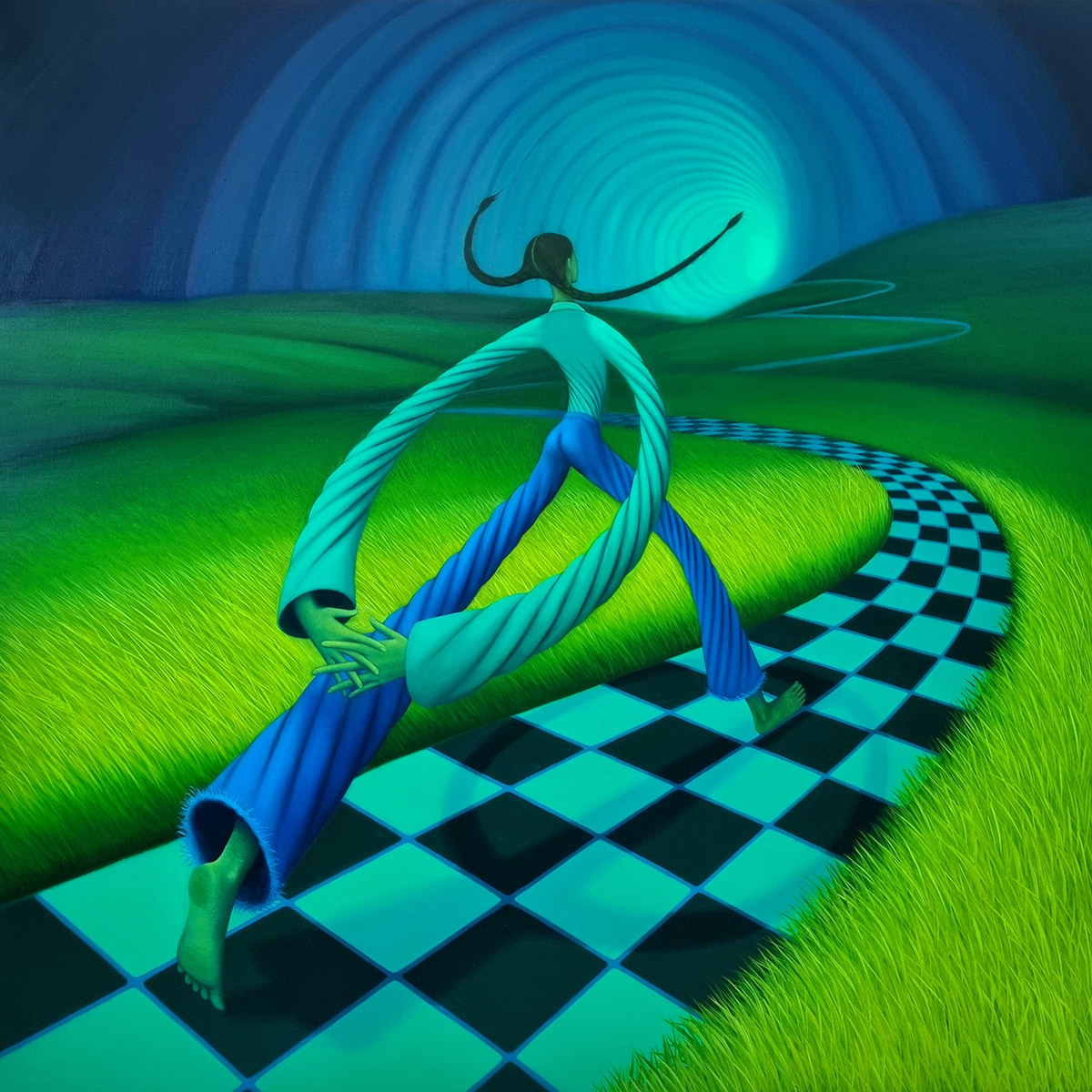Phenomena
2009 - Sculpture (Sculpture)
Yang Xinguang
Although seemingly unadorned at first glance, Yang Xinguang’s sculptural work Phenomena (2009) employs minimalist aesthetics as a means of gesturing towards the various commonalities and conflicts between civilization and the natural world. Comprised of rudimentary planks of wood hammered together into a rectangular form, Yang’s work uses reclaimed materials from everyday life and seems deliberately in conversation with Arte Povera, the art movement that originated in Italy during the late 1960s where practitioners produced art from found and common materials as an act of resistance against the decided commercialization of the art world through market economies. Yang, by extension, pays close attention to his materials in attempt to release the forms within them rather than impose his own. He rarely adds anything to the materials that he uses; instead, he chisels, pares and scrapes the excess away, allowing his completed works to emerge through a combination of happenstance and almost meditative handwork. In Phenomena , Yang’s handwork becomes apparent in a constellation-like form scratched into the wood. Suddenly, the nails and knots in the wood’s surface become vertices in a larger web of connecting lines, suggesting the inexorable interconnections between our alternately fabricated and naturally occurring environments. Rather than privileging one over the other, Yang’s work invites us to contemplate these relationships and how these coessential phenomena define our existence.
Yang Xinguang is an artist whose work explores the interconnections between the natural world fabricated materials in a post-industrialist society. His work is deliberately restrained and frequently uses reclaimed materials such as found wood planks, a gesture that recalls the Arte Povera movement’s commitment to using un-rarified and common materials in art making practice. His work is also deeply invested in exploring the phenomenological relationship between viewers and artworks, and his sculptural installations gesture towards Minimalist traditions, inviting viewers to pause and consider their own relationship to their surrounding space.
Colors:
Related works featuring themes of: » Abstract Versus Figurative Art, » China, » Contemporary Conceptualism, » Craftsmanship and Design, » Chinese
» see more

© » KADIST
Du Zhenjun
2010The Tower of Babel is an installation of large-format photographs that forces the audience to occupy a central position through its monumental scale...
Other related works, blended automatically
» see more

© » KADIST
Geoffrey Farmer
2009Ongoing Time Stabbed with a Dagger was Farmer’s first kinetic sculpture that added a cinematic character to an “ever-reconfiguring play presented in real time.” The assembly of various objects and props on top of a large platform constitutes not only a work, but, to a certain extent, a show in itself...

© » KADIST
Chen Shaoxiong
2007After engaging primarily with video and photography for more than a decade, Chen turned to painting to explore the issue of urban change and memories—both personal and collective...
Related works sharing similar palette
» see more

© » KADIST
Proyecciones Espacio Odeón (Bogotá, Colombia) y Museo La Tertulia (Cali, Colombia) ¿Cómo enfrentamos la incertidumbre de estos tiempos? ¿Puede el juego, los sueños, o incluso las alucinaciones ayudarnos a imaginar otras posibles trayectorias? ¿Qué tipo de prácticas nos permiten relacionarnos con los territorios que habitamos? Tomando como punto de partida el potencial de lo inquietante en medio de una amenaza invisible, Sigo esperando es una serie de proyecciones en las fachadas del Espacio Odeón (Bogotá) y del Museo La Tertulia (Cali)...
Related works from the » 2000's created around » Beijing, China
» see more

© » KADIST
Jiang Pengyi
2008Unregistered City is a series of eight photographs depicting different scenes of a vacant, apparently post-apocalyptic city: Some are covered by dust and others are submerged by water...

© » KADIST
Jianwei Wang
2007In Dilemma: Three Way Fork in the Road , Wang references Peking opera in a re-interpretation of traditional text...

© » KADIST
Xiaoyun Chen
2006The image of rusted nails, nuts and bolts as shrapnel sandwiched between a fried Chicken burger highlights the contrast between decadence and destruction...
Related artist(s) to: Yang Xinguang » Bao Dong, » Duan Jianyu, » Guan Xiao, » Huang Po-Chih, » Jiang Pengyi, » Larys Frogier, » Li Qi, » Maria Taniguchi, » Moe Satt, » Philip Tinari
» see more
Related works found in the same semantic group
» see more

© » KADIST
Ana Roldán
2012Ana Roldán’s Primeval forms series looks up close at the fecund shapes of plants often found in the artist’s native Mexico...

© » KADIST
Chris Huen Sin-Kan
2013Contrast to the bustling and unrelenting experience of a city such as Hong Kong, Chris Huen Sin Kan paints the tranquil interiors of his apartment, where he leads a modest and almost hermit-like life...













